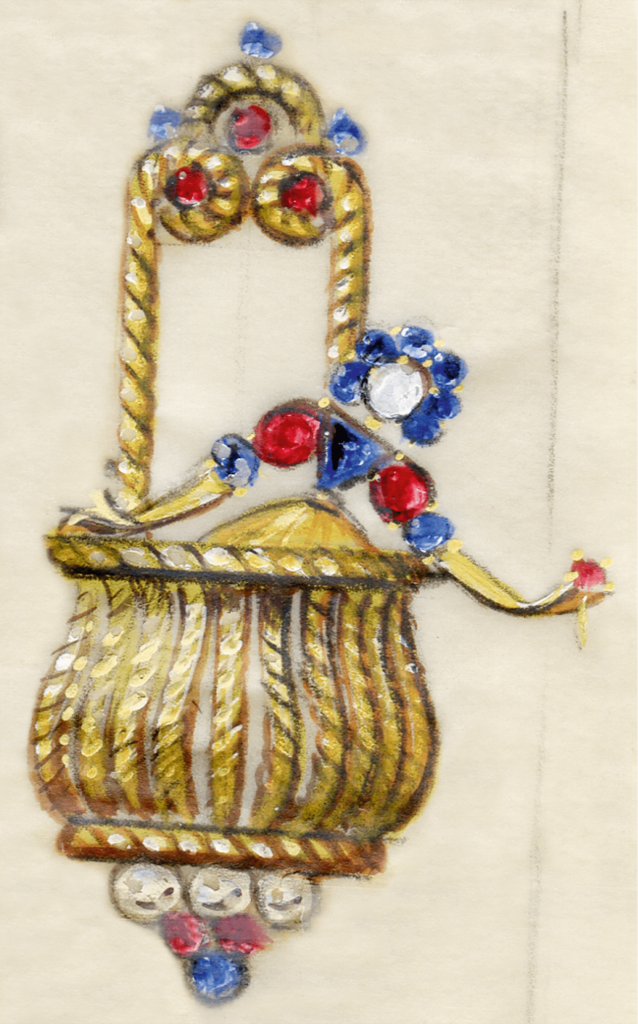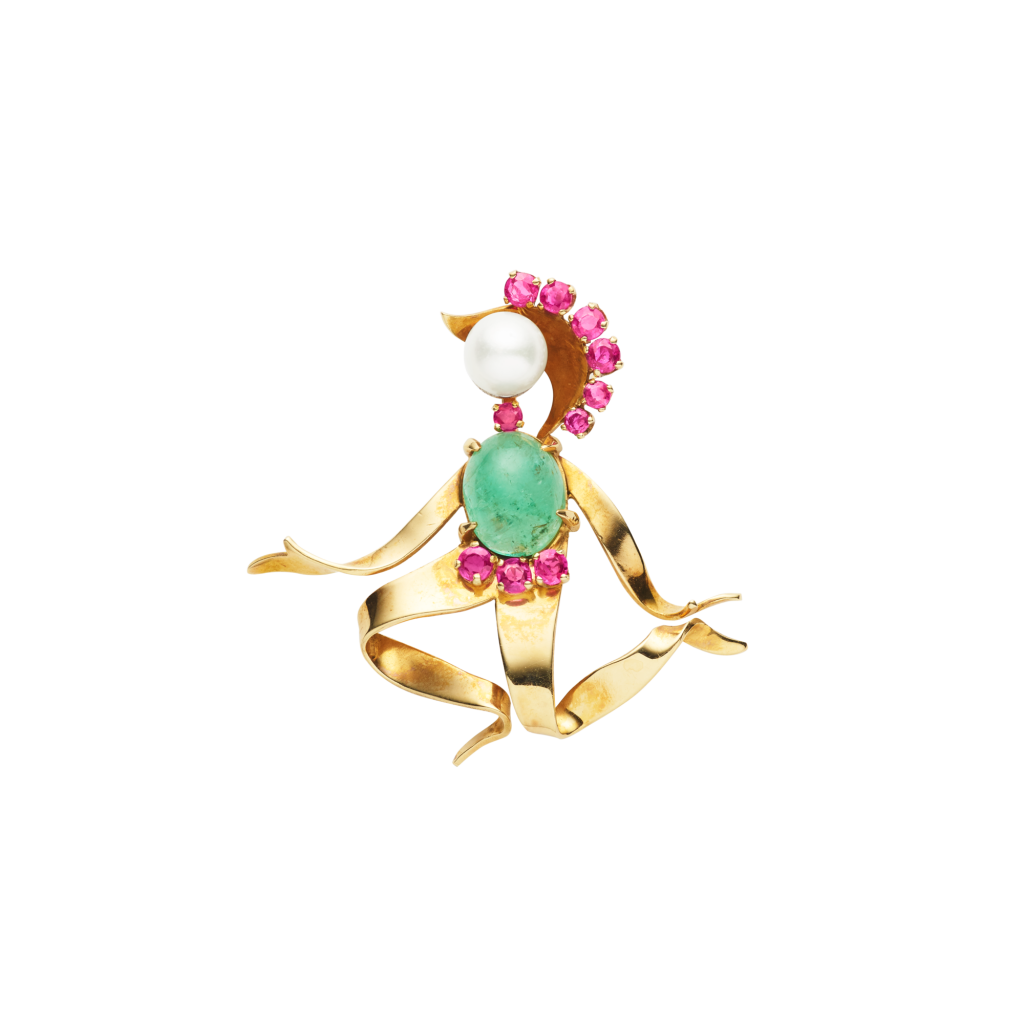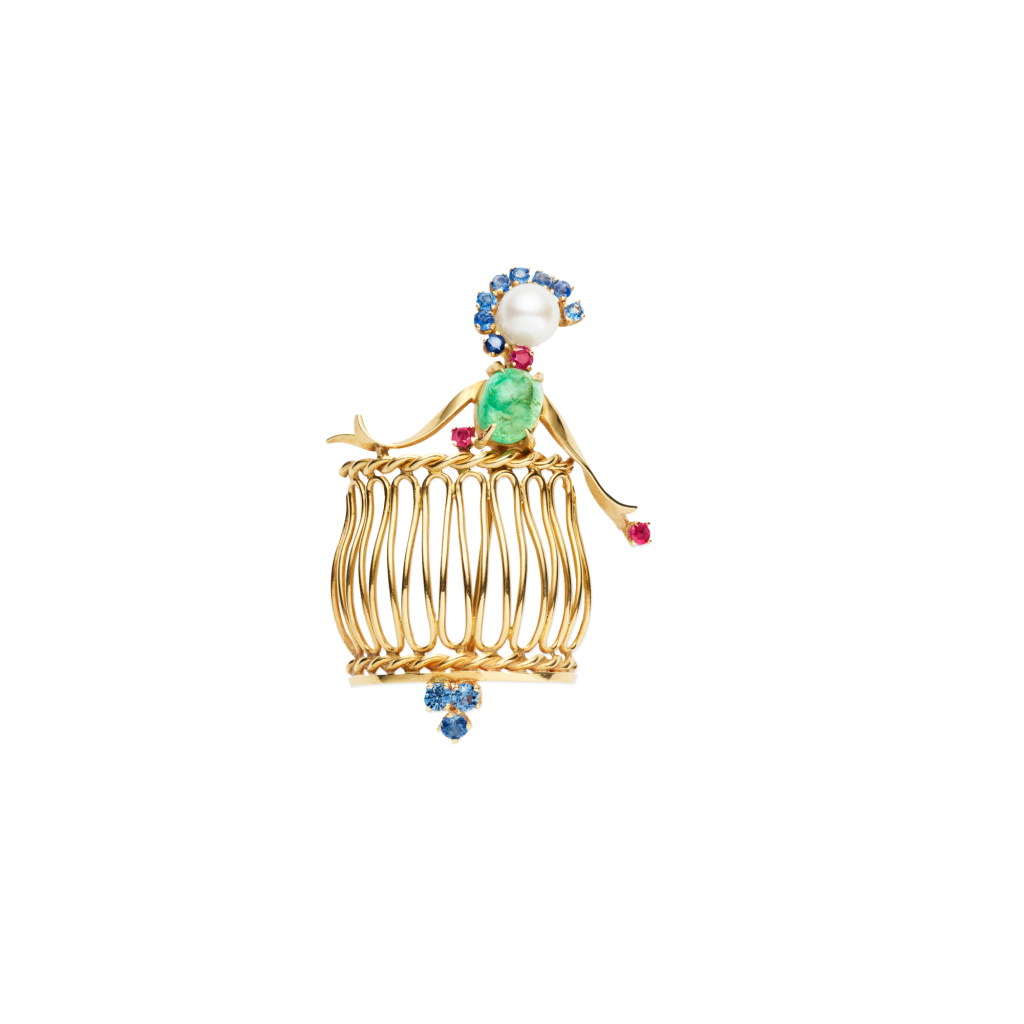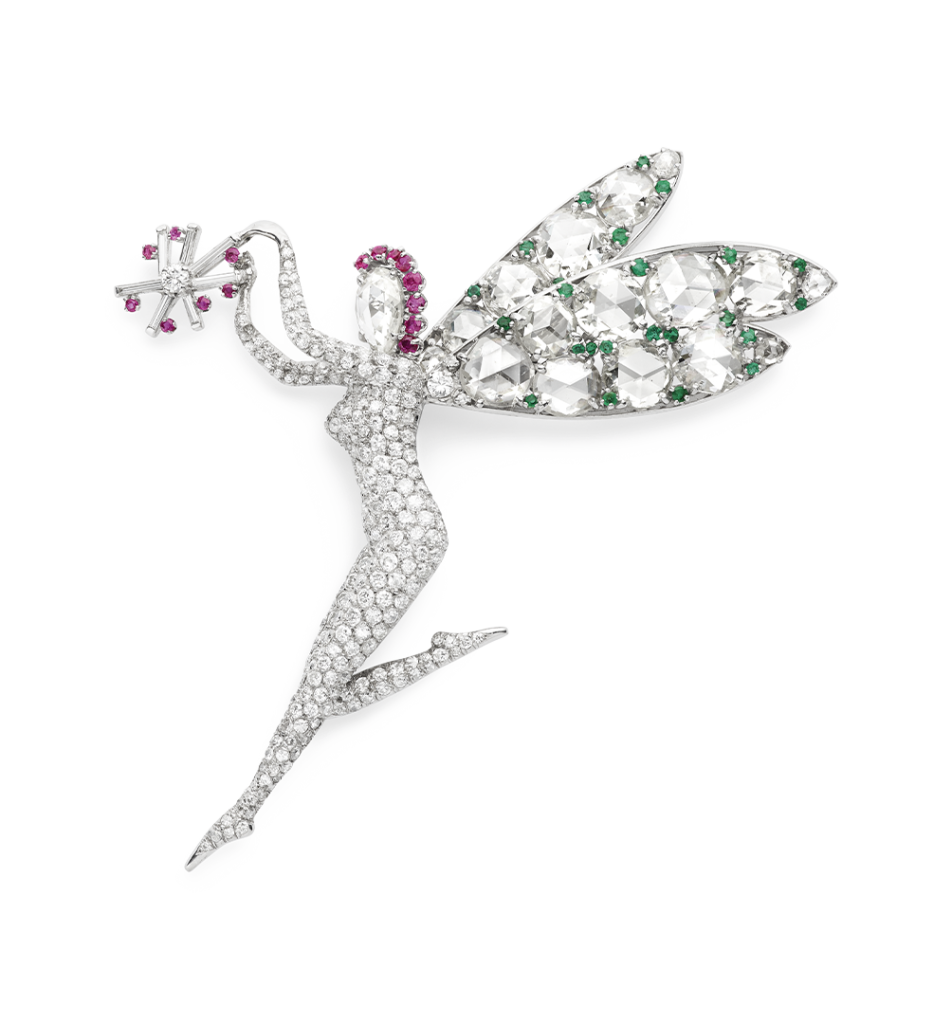
Romeo brooch
Creation details
- Creation year 1951
- Usage Clip
- Dimensions 40 × 45 mm
Linked piece
These two brooches “capture the poetry of Shakespeare in jewelry,”1Van Cleef & Arpels advertisement, The New Yorker, c. 1951. transcribing Act II Scene 2 of Romeo and Juliet in a minimalist way.
Romeo’s kneeling posture and the presence of the balcony, over which Juliet leans, clearly identify the lovers as described in the English playwright’s famous work. They were donated by Claude Arpels on the occasion of the American Red Cross Ball held at the French Embassy in Washington in 1952.
The silhouettes of the two figures are characterized by their extremely simplified form. Their heads are portrayed with a white pearl, while their busts are suggested by an oval-shaped, claw-set emerald cabochon, enhanced with round rubies. Their limbs are sketched with small strips of polished yellow gold bent to render movement. Romeo sports a hat of yellow gold decked with a ruby feather, and Juliet’s hair is composed of circular sapphires. Lastly, the balcony has a sinuous yellow gold railing framed by twisted gold braids, its corbelled construction hinted at by three circular-set sapphires.
The preparatory studies
The preparatory study for these two brooches shows that their design was originally intended to be far more detailed. The balcony was coupled with a trilobe window, also of twisted gold. The costumes, while highly stylized, supplemented the simple central emerald retained for the final versions. Romeo’s cape and sleeveless tunic were depicted with rays of polished yellow gold, similar to the skirts of some of the Dancer slips dating from the same period, while his ruff, body, and sleeves were depicted with diamonds, rubies, and sapphires.


Balcony scenes, a recurring motif
Another preparatory drawing board shows a variation of the literary motif with the same economy of means: Act III Scene 7 of Cyrano de Bergerac, which takes up the balcony theme, the common architectural thread between the two plays. Roxane and Cyrano are distinguished by their attire; the latter, particularly, with his nose emphasized by a ruby.
The return of figuration
This geometric approach to sartorial accessories and anatomy, denoted by the contours of a single gem, is seen in most of the figurative motifs since the early 1940s, as illustrated by the Dancer and Fairy clips, and the depictions of paintings and ballets on the lids of Minaudières and powder compacts.
Small strips of polished yellow gold, worked to suggest the flexibility of bodily movements, were also used in the animal clips created by Van Cleef & Arpels in the 1940s. The Romeo and Juliet brooches are entirely in keeping with this figurative approach, developed in the 1940s and continued in the following decade.
To go deeper









